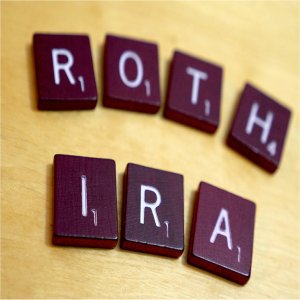4 Reasons Why You Should Choose a Roth IRA

Every year, more and more people seem to put the Roth IRA on a pedestal while claiming it to be the best retirement account around. In short, it’s a way to use post-tax money in a savings account and invest in growing a portfolio. If you’re not sure why you should pay attention to the IRA while planning retirement, we’ve compiled four of the biggest reasons in this guide!
Free Withdrawals
Sometimes, we find that this benefit goes under the radar (some people don’t even know that the feature exists!). However, you can withdraw contributions at your own discretion. Growing up, we’re told to leave all retirement accounts alone and NEVER touch them during the working years. However, the Roth IRA is one of the most flexible accounts in this regard.
After investing in the account, you can withdraw your own funds at any point. As an example, you might invest $9,000 and earn $3,000 in interest. As long as you don’t touch the new $3,000, you’re free to withdraw however much you like. Once you start taking the $3,000 of earnings, however, this is where you’ll be subjected to penalties and tax requirements. Also, bear in mind that any money you take out can’t be put back easily.
Tax-Free Income
If you want to know the biggest reason why the Roth IRA gets so much attention, it’s probably because of the tax-free income that account holders receive in retirement. To contribute to your account, you’ll need to meet two requirements:
Earn income in the year
Ensure this income doesn’t exceed a certain amount
When saving for retirement, you’ll find two different types of accounts. While some don’t charge tax, and you’ll pay this when withdrawing, others charge tax on the way in. A Roth IRA falls into the latter category; since you’re paying tax when contributing, often directly from a paycheck, you won’t have to pay tax when withdrawing later in life.
Despite all the positives, one frustrating feature for account holders is the capped contributions. Those under 50 are limited to $6,000 per year in 2021, while the limit for over 50s is $7,000. Also, we should note that you cannot contribute more than you earn in a particular year.
What does this mean? Well, $6,000 a year for 35 years is $210,000. Over time, your money will enjoy compound growth as the money is invested. Depending on the annualized rate of return, which can reach 7%, you’ll have close to $1 million at the point of retirement. Save for longer or enjoy a higher annualized rate of return, and you’ll surpass this amount.
Of course, you’ve already paid tax on this money which your future self will absolutely love in retirement. Once you reach 591/2, you’ll have access to the funds without the IRS breathing down your neck.
No RMDs
This might mean nothing to you now, but it’s another one that your older self will appreciate. RMD is short for required minimum distribution, and it doesn’t exist with Roth IRAs. Essentially, some retirement accounts have a rule which suggests that all account holders over 72 must withdraw a certain amount from their tax-deferred retirement plan each year. With every distribution accompanied by a tax bill, it’s nothing but a nuisance for retirees.
If you have several sources of income, you want to dictate when and where you take your distributions rather than being forced into it—no need to panic with a Roth IRA because you control everything. If you want to leave the funds without touching it, do exactly this. Assuming you qualify for the pre-retirement benefits or meet the account requirements, you only take withdrawals when YOU say so.
Simple Inheritance Strategies
Finally, it’s often the case with retirement accounts that you have to take all of the funds in your lifetime. Thankfully, this isn’t a requirement with a Roth IRA. Rather than spending unnecessarily or trying to find a place to put money, you can keep it in the Roth IRA, and this makes inheritance planning much easier. After you die, your beneficiaries simply take control of the Roth IRA.
Again, they have access to the tax-free funds, and you aren’t worrying about draining the retirement income as you get closer to the end. Speak with a financial professional, and they’ll tell you how to pass the Roth IRA down to loved ones and ensure that they enjoy the same benefits as you.
Choose a Roth IRA Today
Why are people endlessly talking about Roth IRAs? Because there are no RMDs, you get tax-free income, withdrawals are free, and it makes inheritance and passing funds down to heirs easier. This is a brilliant retirement solution and one that could just make your retired life less stressful!



